
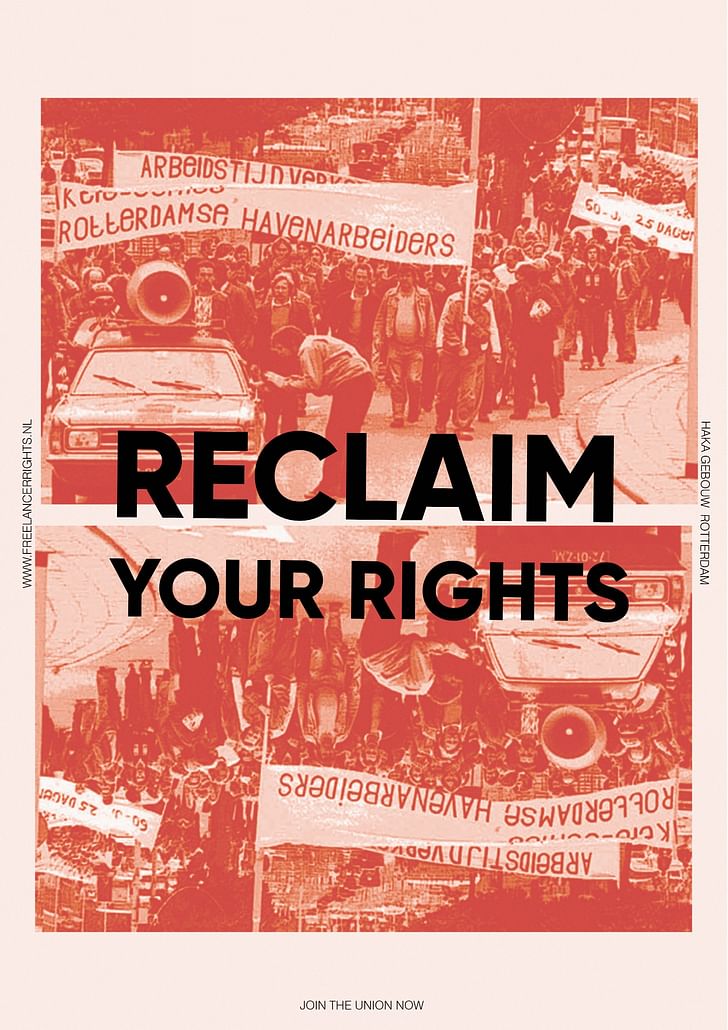
Technological, political and economic transformations over the last few decades have radically changed the nature of work. Today, we can draw floor plans as easily from bed as from the office. And with the emergence of platforms such as Skwerl, the freelance economy looks like it could start to break up the centuries-old work structure of firms.
Along the way, workplace benefits disappear and job security vanishes. In fact, individuals often stop seeing themselves as workers, or distinguish between labor and leisure time. Architecture has never been a particularly receptive profession to unions—or the collectivized bodies of workers fighting for rights and fair pay (as well as other shared goals). But the more precarious our livelihoods the greater the need for solidarity.
Sofia Angelopoulou, a master student at the Master Interior Architecture: Research + Design, MIARD at the Piet Zwart Institute, a postgraduate programme that is part of the Willem de Kooning Academy at Rotterdam University of Applied Sciences. imagined how a union of freelance design workers might be fashioned. Taking a political issue as a design challenge, she developed a piece of joinery that would serve as a symbol of membership as well as help facilitate, materially, collaboration between increasingly atomized workers.
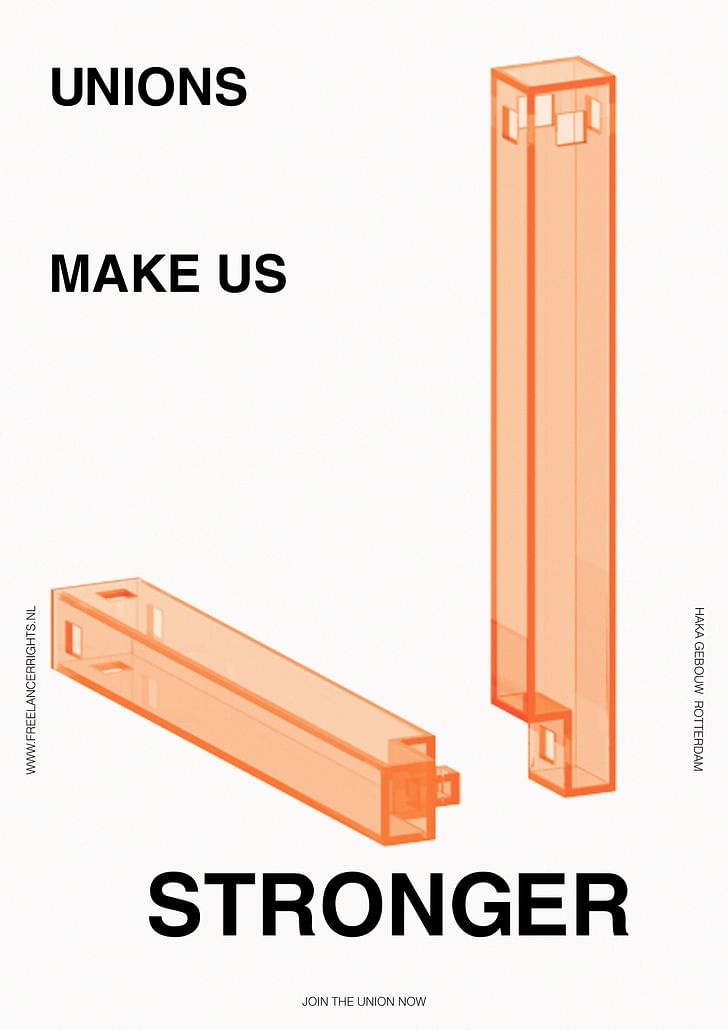
The New Union: Suggestive forms for organized labor in the freelance era
By Sofia Angelopoulou
When thinking about the future of spaces of labor and work in general, it is interesting to consider how our way of work is becoming increasingly individualized, from the fact that one can work from home and set their own timetable but that they also have to pay their own health insurance, pension scheme and cover all costs their type of work requires. Freelancing, as appealing as it appears, also entails many dangers since it cuts one off from the larger framework, the collective support system and community that traditional workspaces used to create.our way of work is becoming increasingly individualized
In this project the trade union is updated to fit the freelancers’ need for a collective physical space to meet face to face, regroup and regain the sense of community. Trade unions have historically been ways of collectivizing and generating political action for the well being of workers. They functioned as physical platforms for the exchange of knowledge, culture, political ideas and opinions and influential examples include the Soviet architects’ Social Clubs and particularly those of Ivan Leonidov.
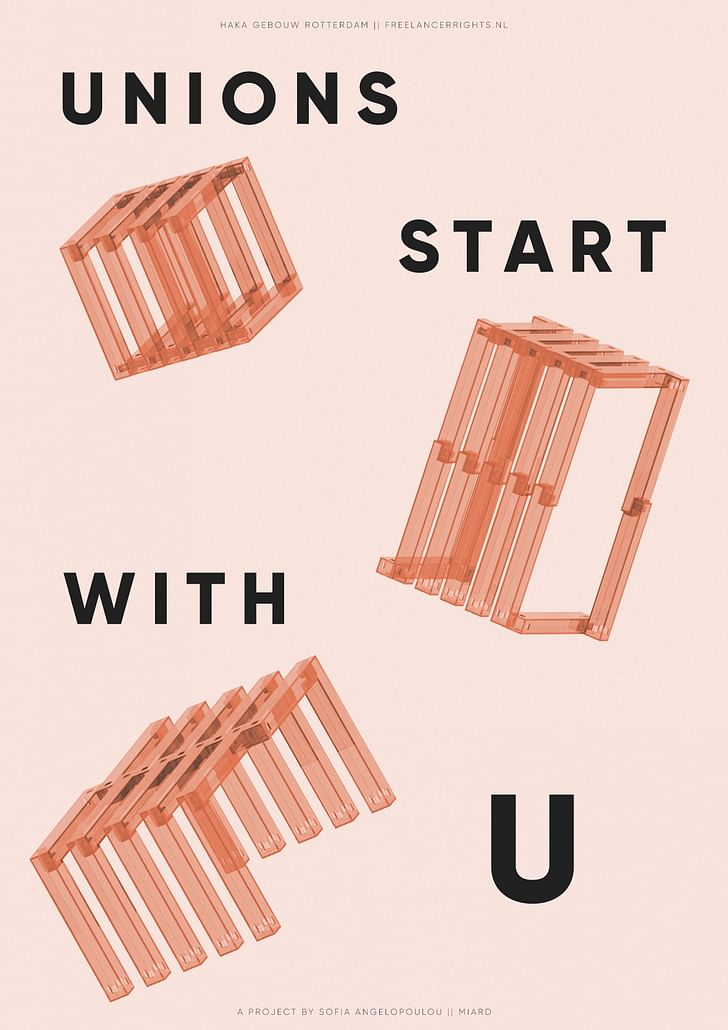

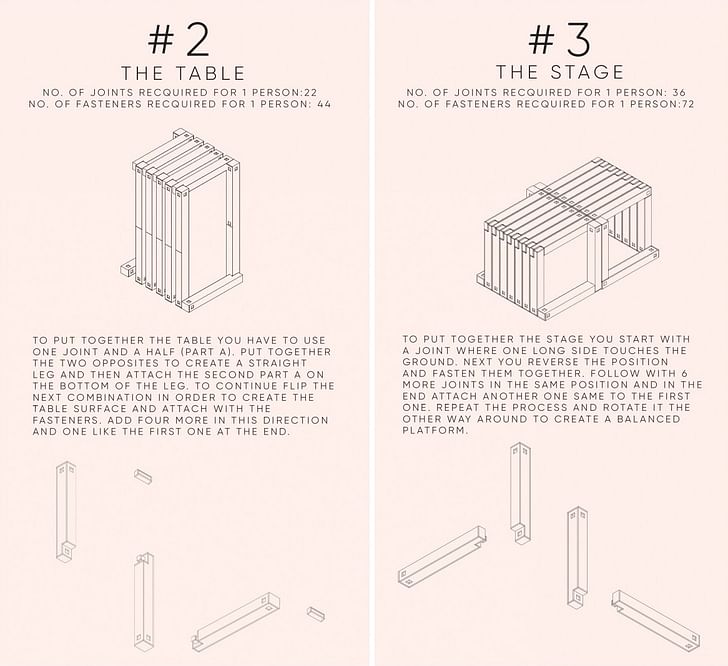
Inspired by organized labor and the spaces it occupies as well as examples of spaces for political conversations and negotiations, such as the Polish Round Table Talks of 1989 or even the Parisian cafes of the 19th century, the typology of the table becomes the main focus as a piece of political architecture and as a mediatory object that brings two parties together. In order to avoid a predefined hierarchy that a ready-made table would imply – but to also encourage collaboration and equality – the design is based on a single piece of joinery. When combined together, the joints become a table, a chair, or a stage.The design stands both as a metaphor, a piece of political, social imaginary and as a very real object
Each new member receives a starter kit upon signing up at the union that includes one joint and an instructions manual on how to make use of it. The design itself requires union members to meet in real space and work together, since the joint cannot function on its own but requires the combination of a few of them to turn into something purposeful. It is constructed out of clear acrylic, which makes it almost invisible and puts the focus on its users instead.
The design stands both as a metaphor, a piece of political, social imaginary and as a very real object that can be used instantly and spontaneously in any space at any time.
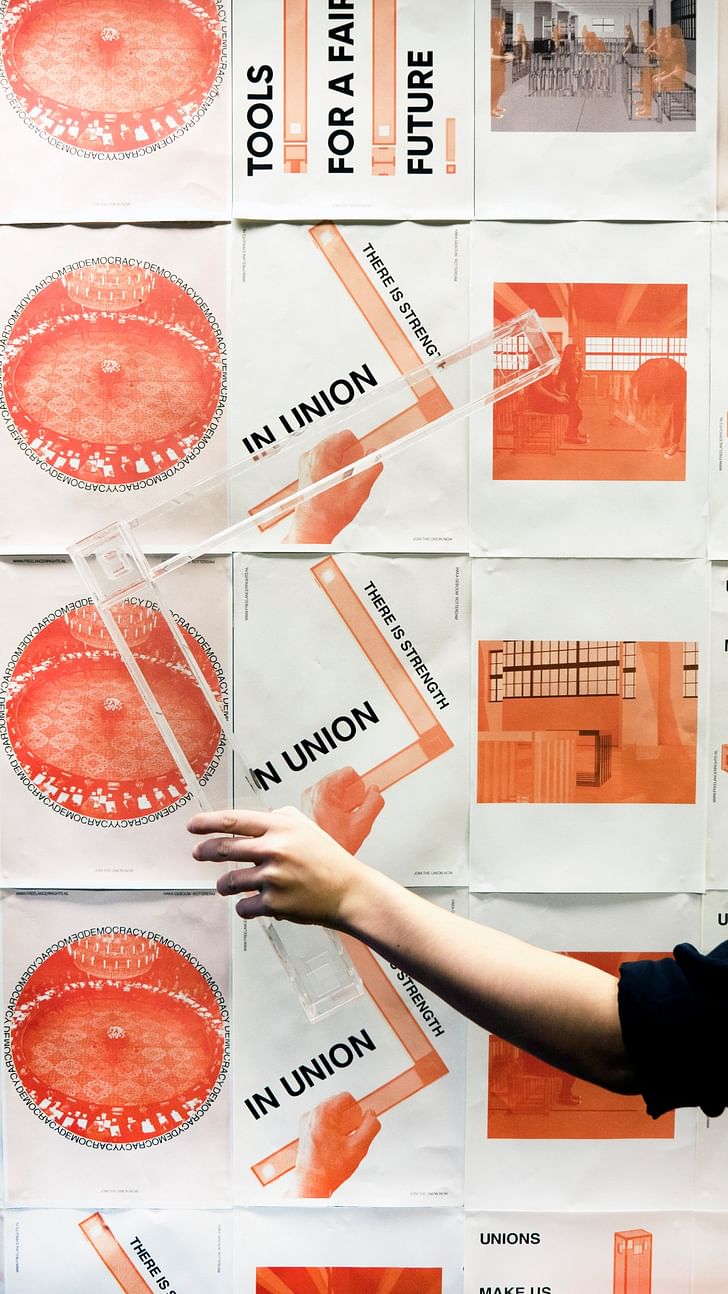
Writer and fake architect, among other feints. Principal at Adjustments Agency. Co-founder of Encyclopedia Inc. Get in touch: nicholas@archinect.com
5 Comments
Union? No thank you.
My success an career path will be determined by my own skill sets, not a collective bully propping up those unwilling to work their way.
You're not flipping burgers or working a cash register.
¯\_(ツ)_/¯
"When thinking about the future of spaces of labor and work in general, it is interesting to consider how our way of work is becoming increasingly individualized, from the fact that one can work from home and set their own timetable but that they also have to pay their own health insurance, pension scheme and cover all costs their type of work requires. Freelancing, as appealing as it appears, also entails many dangers since it cuts one off from the larger framework, the collective support system and community that traditional workspaces used to create."
I freelance exactly because I don't want others to decide for me, it doesn't cut me off at all, it gives me more freedom. Since I work at architectural offices and am not a blogger in the local coffee shop, I'm still part of the community and traditional workspace. It's the best of both worlds. All additional costs that normally employers have to pay, such as pension and health insurance are simply included in my hourly rates.
"In this project the trade union is updated to fit the freelancers’ need for a collective physical space to meet face to face, regroup and regain the sense of community. Trade unions have historically been ways of collectivizing and generating political action for the well being of workers. They functioned as physical platforms for the exchange of knowledge, culture, political ideas and opinions and influential examples include the Soviet architects’ Social Clubs and particularly those of Ivan Leonidov. "
Is there really such a need among freelancers? One reason to go at it on your own is exactly because you want to be more independent and in control, no? If freelancers really feel the need to be part of such an old-fashioned and traditional collective, wouldn't they just find regular employment?
Lastly, those stools and tables look very hard, uncomfortable and not ergonomically safe, the perfect metaphor for this union :)
As a proposition, it doesn't get very from it's origins...
Based on what we can see there's not enough history (why unions have never been a part of architectural practice in the 1st place, etc.), and not enough serious exploration of the implications of that as a shift in practice. Instead it's another spin on the workers social club. Something that we've seen time and time again- and is really a thesis about defining the activities of workers- or in the context of architecture- the apprenticeship.
I'm betting the outcome was driven by a desire to make a clever thing in the shop instead of really understanding architectural practice. More history and posters, less lucite.
Freelancing means having multiple sources of income and it feels far more secure to me than having just one (employment). I am a freelancer because it feels dangerous to be at the mercy of an employer.
However, I have been building a co-op which is more of a network, not a union at all. Therefore, I don't feel cut off as I'm right in the middle of something I am building myself. Seems the article is about building some furniture things and not about much else. Blah.
Block this user
Are you sure you want to block this user and hide all related comments throughout the site?
Archinect
This is your first comment on Archinect. Your comment will be visible once approved.